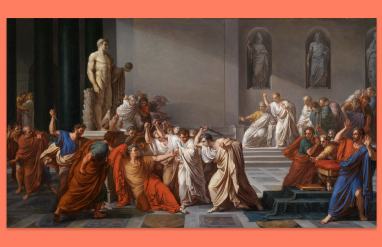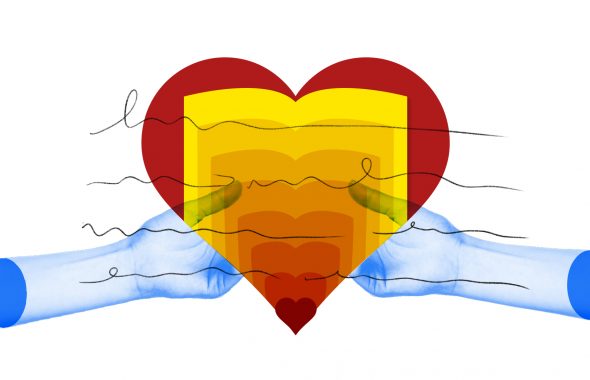When you hear the phrase red carpet, what comes to mind? Chances are that it’s not the questionable red shag from the ’70s that covers the living room in your relative’s aging home.
For many people, the red carpet is synonymous with prestige, status, celebrity, ceremony, and a whole lot of pomp and circumstance. Hollywood’s big night, the Oscars, is a prime example. But this association has a much longer history. To fully understand all that the red carpet means and has come to mean, let’s roll out the red carpet and give the phrase the—what else?—red carpet treatment.
What’s your favorite red carpet event? If you love the Golden Globes, read more about them here.
What is the red carpet?
The red capet, in the celebrity sense, is “an area abutting the entrance to a building, usually carpeted in red, where celebrities gather and walk before participating in or taking their seats at a big event.”
This is the area where people watching the event from home catch all the pre-awards action. You know the type of action: interviewers shouting questions about what people are wearing, camera lights flashing, and video cameras rushing around to film as many people walking and standing as they can. Regina King may be stopped for a quick question on what designer she’s wearing on the red carpet, for example, or all eyes might be on Janelle Monáe walking the red carpet before taking her seat.
The red carpet wasn’t always so tied to awards shows. Another definition for red carpet is a strip of carpet (red, obviously) for high-ranking dignitaries and royals so they can avoid having to walk on the ground the rest of us use. The United States president, when traveling by plane to another country, may have a red carpet laid out on the tarmac for him to walk from the plane to the building, for example. Or people who work for the Queen of England may stretch a literal red carpet from her car to the door of wherever she’s going.
America doesn’t have royals. We do, however, have celebrities who capture about as much, if not more, of our attention as royals do in some other countries. The definitions are connected in this way, though for celebrities the red carpet is almost exclusively for awards ceremonies.
The growth of what the red carpet means and stands for doesn’t stop at celebrities. Today, the red carpet is loaded with metaphorical meanings tied to respect and honoring a person. People roll out the red carpet for special guests, while those who are held in high esteem can get the red carpet treatment at events and restaurants. Rather than referring to carpets of any kind or color, getting the red carpet treatment in these cases may mean something as extravagant as having a party meet the person at the door or something as simple as being ushered to the prime seats in the house.
A brief history of red carpets
Every year around the Oscars, movie stars are taking part in a red carpet tradition that’s believed to date back thousands of years. In the Ancient Greek play Agamemnon, written in 458 BCE, the titular king has a red carpet pathway set out for him when he returns from the Trojan War. It didn’t end well. Red carpets were believed to be reserved for the gods at the time; they walked on them to avoid touching the ground that mortals do. That moment of hubris confirmed the gods would not spare Agamemnon.
By Renaissance times, mere mortals were walking on red carpets without instigating their death. Not just any mere mortals, though. Paintings from the time show religious leaders and royalty as the only ones who walked the red carpet because the color came from a rare and expensive dye made from cochineal insects. The little bugs are originally from the Americas, and only people with vast wealth could afford to get them across the Atlantic.
Red isn’t the only color with these associations. Purple is another color that was rare and expensive to produce before synthetic dyes—it took a painstaking process of extracting the color from sea snails using lead. Purple, like red, was reserved for royalty in Persia and Ancient Rome.
The tradition was passed to people in the earliest days of the United States, as well. The fifth president, James Monroe, had a red carpet rolled out for him in 1821 as he walked off of a riverboat in South Carolina. Railroad executives in the early 1900s used the allure of the red carpet to give an elevated first class experience.
How red carpets got rolled out for Hollywood
The red carpet has been rolled out for movie stars since the earliest days of big time cinema. The premiere of Robin Hood at the Egyptian Theatre in Los Angeles in 1922 is thought to be the first to feature a red carpet for stars to walk on as they entered the establishment. The people reading about and looking at pictures of those first red carpets, however, were stuck with a black and white rendition until color photography and film became common. The symbolic nature of a red carpet had by this point moved from a death knell for Agamemnon to a signifier of wealth and status detached from any royal or godly associations.
Despite the long history, red carpets today are most famously associated with the Oscars. At the Dolby Theater in Los Angeles where the Academy Awards are held, organizers lay down a 900 feet long and 33 feet wide red carpet. The vast area is where stars pause to make an entrance. And where there are stars, there’s the press. Fans and reporters lined the edges of the red carpet during the 1922 Robin Hood premiere just as they do outside of the Dolby Theatre today. The red carpet was a way to reach otherwise inaccessible celebrities at a time before everyone could follow every minute of the lives of the rich and famous on social media.
In the 1960s, the first broadcast cameras filmed the stars from the moment they exited their ride to the moment they entered the venue. The cameras made each celebrity’s entrance a time for them to make a statement. And that has included outfit statements from the start, as eye-catching fashion became the norm in the ’60s as well.
The luxurious connotations of the red carpet have a long history with humans. So the next time you’re watching a royal, government official, athlete, or celebrity get the hero’s welcome and the full red carpet experience, rest assured that they aren’t the first and won’t be the last.













